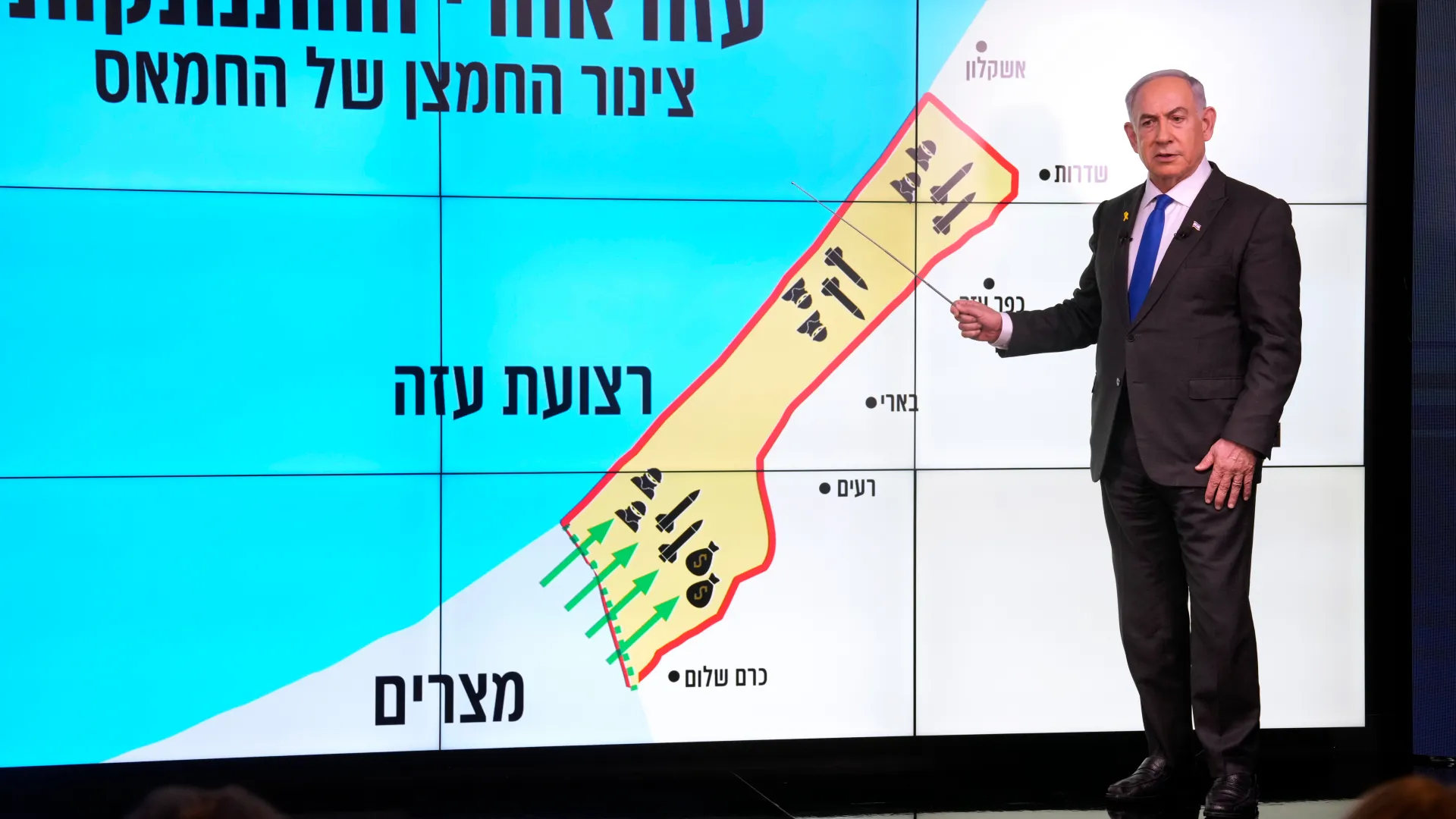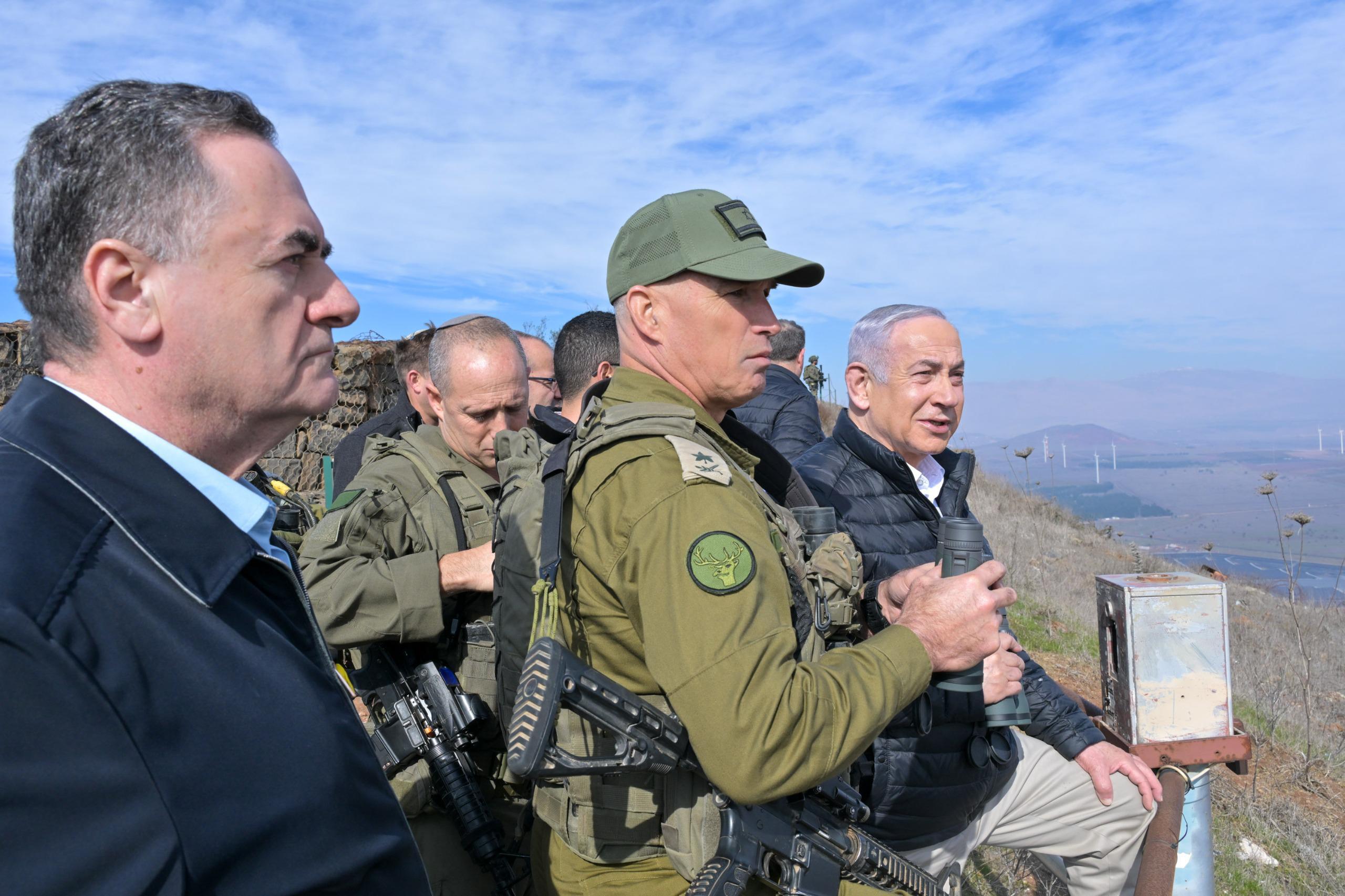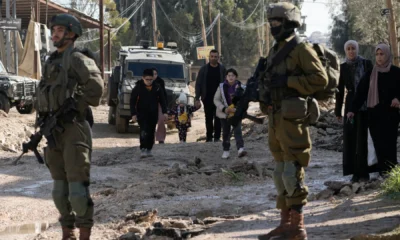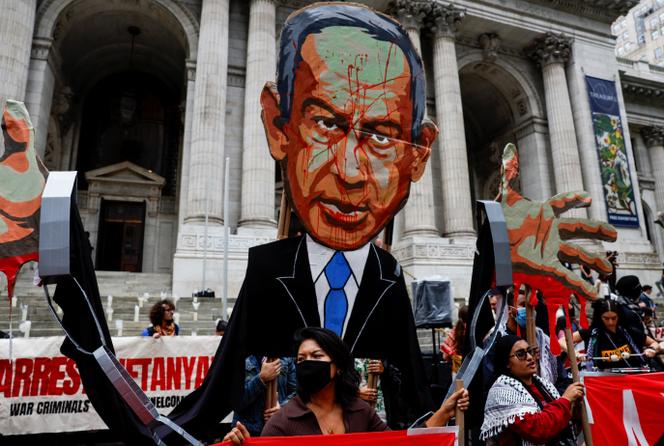Trends
Whispers Of An Israeli Ceasefire In Gaza. Is Syria The New ‘Carrot’ After Bashar al-Assad’s Fall?
The potential ceasefire in Gaza appears to be less about humanitarian concerns and more about Netanyahu’s broader regional ambitions.
Published
10 months agoon

The devastating war in Gaza, which has claimed over 44,800 lives and left thousands buried beneath rubble, might be approaching a turning point. Whispers of a potential ceasefire have begun to circulate, hinting that Israeli Prime Minister Benjamin Netanyahu could be prepared to end the assault.
This speculation gained traction after U.S. National Security Advisor Jake Sullivan, following his meeting with Netanyahu, stated he “got the sense” that Netanyahu was “ready to do a deal.” For months, Netanyahu has been seen as the key roadblock to any ceasefire, most notably in September when his last-minute objections derailed a near-signed agreement.
The documents Netanyahu cited to justify continued bombings were later exposed as forgeries by Israeli authorities. The ask for accountability have risen sharply since then, with the International Criminal Court (ICC) issuing arrest warrants for Netanyahu and others over alleged war crimes and crimes against humanity in Gaza.
Meanwhile, international pressure has mounted. On Wednesday, the UN General Assembly passed a resolution calling for an immediate ceasefire and expressed support for UNRWA, the UN’s agency for Palestinian refugees. However, Israel has banned UNRWA from operating within its territory and Palestinian areas, maintaining a defiant stance against the international community.
Is Netanyahu Truly Bowing to International Pressure?
Despite the mounting global outcry, Netanyahu’s past actions suggest he is unlikely to yield to external demands alone. Israel has consistently positioned itself as defiant, brushing aside UN objections and ICC investigations.
The country has escalated military actions beyond Gaza, launching strikes in Syria, shelling UN peacekeepers in Lebanon, and expanding its control over the occupied Golan Heights. Just before the UNGA vote, Israel dismissed international condemnation of its invasion of Syrian territory, framing it as a necessary security measure to protect its borders.
Moreover, Israel has labeled criticism of its actions as anti-Semitic and rejected the genocide case filed against it by South Africa in the International Court of Justice (ICJ). Against this backdrop, a shift in Netanyahu’s stance on Gaza appears unlikely to stem from diplomatic pressure alone.
The Syrian Connection. A New Geopolitical Opportunity
Observers suggest that Netanyahu’s sudden openness to a ceasefire may be driven by a new geopolitical opportunity rather than a change of heart. The recent collapse of the Syrian regime under Bashar al-Assad, a long-time ally of Iran, appears to have reshaped the regional power dynamic.
Netanyahu, in a press conference on Tuesday, framed Assad’s downfall as a critical blow to what he called Iran’s “axis of evil.” He proclaimed that the “absolute victory” critics had once dismissed was now within reach. By shifting focus to Syria, Netanyahu could present the ceasefire in Gaza as a strategic decision rather than a concession under international pressure.
With Assad gone, Israel might see a chance to consolidate gains in Syria, southern Lebanon, and the Golan Heights while deflecting attention from Gaza. This realignment could allow Netanyahu to pursue broader regional ambitions while temporarily pacifying critics at home and abroad.
Why Netanyahu May Now Be Ready for a Ceasefire
Israeli Prime Minister Benjamin Netanyahu’s apparent openness to a ceasefire in Gaza has raised eyebrows, given his steadfast refusal until now. For months, Netanyahu has justified ongoing assaults by claiming to seek an “absolute victory,” a term dismissed as “gibberish” by
Defense Minister Yoav Gallant in August. However, with the collapse of Syria’s Bashar al-Assad regime, Netanyahu seems to perceive a strategic opening that shifts the calculus in favor of a ceasefire.
Hamas’s Position
On the other side, Hamas appears to have softened its stance. In recent negotiations in Egypt, the group has reportedly agreed to allow Israeli troops to remain in Gaza temporarily—something it had previously deemed non-negotiable.
According to The Wall Street Journal, the prospective deal involves a 60-day “pause” in hostilities, during which Israeli troops would hold their fortified positions along the Philadelphi Corridor, controlling access between Gaza and Egypt, and the Netzarim Corridor, dividing north and south Gaza.
In return, Hamas has proposed releasing 30 vulnerable Israeli captives. In exchange, Israel would free Palestinian prisoners and increase the flow of humanitarian aid into Gaza. While humanitarian agencies have criticized Israel for blocking aid, Israel denies such allegations.
The Fall of Assad Presents A Strategic Opportunity
The ousting of Bashar al-Assad has significantly altered the geopolitical dynamics, providing Netanyahu with what he views as a “historic opportunity.” Israel has long viewed Syria as a critical corridor for Iranian arms shipments to Hezbollah and a hub for Iranian military proxies.
With Assad gone, Netanyahu’s focus has shifted to destroying remnants of Syrian military infrastructure, targeting weapons depots, research centers, and strategic facilities in over 400 strikes since Assad’s flight to Russia.
Israel has also moved troops into the UN-buffered Golan Heights zone, which has been demilitarized since 1974. While these incursions have drawn sharp UN protests, Israel claims they are necessary to prevent arms from falling into the hands of “extremists,” including Hayat Tahrir al-Sham (HTS), a leading opposition group in Syria.
Expanding Israel’s Northern Strategy
Netanyahu’s interest in Syria extends beyond Iran. Turkey’s growing influence in the region, coupled with its adversarial stance toward Israel, poses another challenge. By strengthening Israel’s northern borders and countering Turkish ambitions, Netanyahu aims to capitalize on Syria’s fragmented state.
This strategy aligns with suggestions from Israeli leaders like Benny Gantz, who called the current moment “an opportunity of historic proportion.” Gantz proposed fostering alliances with Druze, Kurds, and other Syrian minorities traditionally opposed to Assad. Such partnerships could bolster Israel’s strategic depth in the region.
Former Colonel Anan Wahabi, a Druze researcher, went a step further, suggesting Syria be divided into autonomous cantons. This fragmentation could create cooperative entities along Israel’s northern border, providing long-term security advantages.

Israeli Aggression in Syria what is happening on ground?
Since Assad’s departure, Israel has intensified its activities in Syria, launching airstrikes on military sites and conducting ground operations that have destroyed essential infrastructure in southeastern Quneitra.
Roads, power lines, and water networks have been targeted, leaving the region in disarray.
Israel justifies its actions as a preemptive measure to eliminate potential threats from extremist groups and Iranian proxies. However, the devastation caused by these operations has worsened Syria’s fragile state, raising questions about Israel’s long-term goals.
Ahmed al-Sharaa’s acknowledgment of Syria’s “exhaustion” illustrates the challenges faced by a nation ravaged by over a decade of civil war, political upheaval, and external interventions. While condemning Israel’s actions, Syria lacks the military and economic resources to mount a significant resistance.
The ongoing fighting in northeastern Syria further complicates the situation. The Kurdish-led Syrian Democratic Forces (SDF) are engaged in clashes with the Turkish-backed Syrian National Army (SNA), while Hayat Tahrir al-Sham (HTS), which played a key role in overthrowing Assad, is embroiled in its own battles.
Turkiye’s growing influence in Syria adds another layer of tension. Its adversarial stance toward Israel, coupled with its support for opposition forces, has positioned it as a significant player in the region. For Israel, countering Turkiye’s ambitions near its northern borders could be a key driver behind its actions in Syria.
The Role of International Diplomacy
Amid this chaos, international actors are stepping in to address Syria’s future. A high-profile meeting in Jordan brought together diplomats from eight Arab nations, Turkiye, and the United States to discuss a peaceful and inclusive political transition for Syria.
While such efforts indicate the global importance of stabilizing Syria, the involvement of multiple stakeholders with conflicting interests complicates the path forward. For instance, the United States, while designating HTS as a terrorist organization, has acknowledged “contact” with the group. .
The Last Bit
For Syria, the priority remains stabilization and securing international support for its recovery.
While Ahmed al-Sharaa has condemned Israel’s land grabs, his acknowledgment of Syria’s weakened state reflects a pragmatic approach aimed at avoiding further escalation.
The potential ceasefire in Gaza appears to be less about humanitarian concerns and more about Netanyahu’s broader regional ambitions. With Assad’s fall, Israel can refocus its military and diplomatic energy on Syria while leveraging the Gaza ceasefire to placate international critics.
The humanitarian toll in Gaza has been catastrophic, with tens of thousands killed and countless more trapped under rubble. While a ceasefire would bring much-needed relief, it remains intertwined with geopolitical calculations that extend far beyond Gaza’s borders.
You may like
-
Trump’s Bold Gaza Plan Receives Netanyahu’s Backing. Will The World Allow Gaza’s Future To Be Shaped By Foreign Interests, Or Seek A Just Solution For Palestinians?
-


When Brands Become Battlefields. How Starbucks’ Boycott Woes Reveal The Harsh Reality Of Global Business Today
-


Israel-Hamas Put Gaza In The Eye Of The Storm (Again). Can Arab Mediators Patch Up The Ceasefire? And What Is To Be Said About Trump’s Plan For Gaza Anyway?
-


Israel Shifts Focus From Gaza To West Bank. Why? Has Trump Administration Inadvertently Given Israel A Unique Opportunity To Extend Superiority In The Region?
-


Israel-Hamas Ceasefire. Who Really Brokered The Peace—Biden Or Trump? Is This Really A Ceasefire Or An Agenda Hidden?
-


Finally, The War To End? Qatar’s Gaza Ceasefire Proposal. Israeli Soldiers Recount Horrors Of Gaza War Threaten To Stop Fighting If Gaza Ceasefire Deal Not Secured

